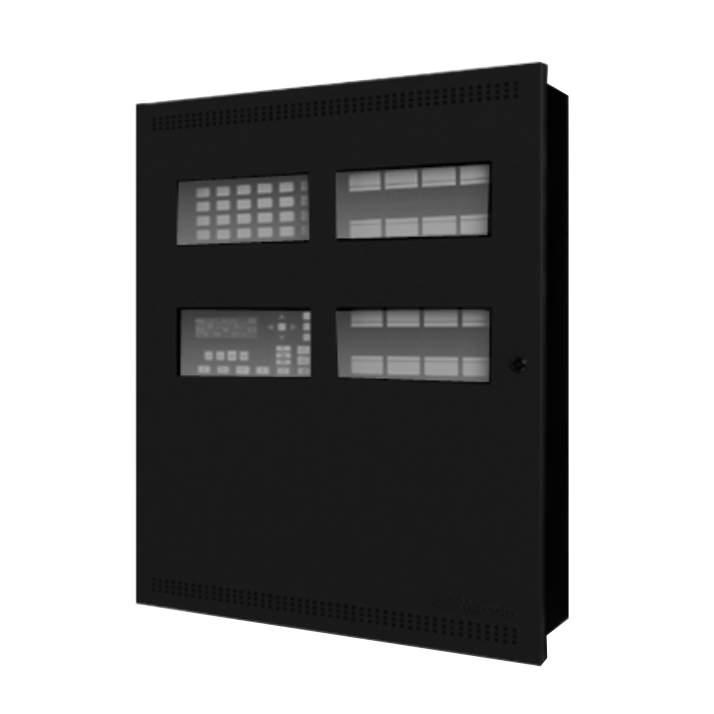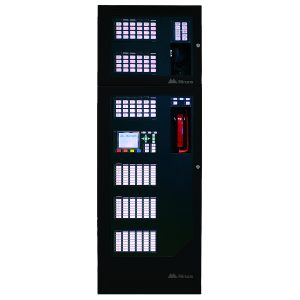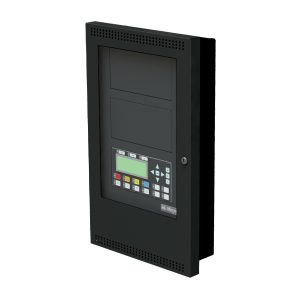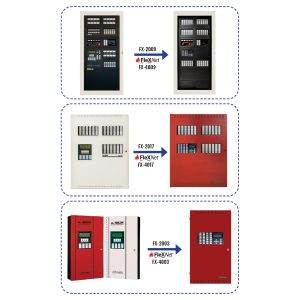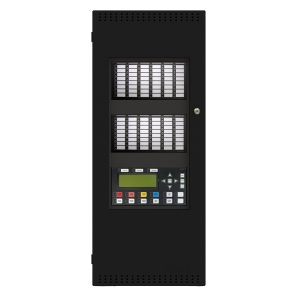For projects where flexibility is needed, Micom’s FleX-Net™ FX-4017-12N is a powerful multi-protocol solution.
The FleX-Net FX-4017-12N Fire Alarm Control Panel is designed to meet virtually any application of detection, control, notification, and emergency communications. Features such as fire detection & alarm, audio/voice evacuation, BACnet, Boolean logic, networking and graphical workstation support allow this modular solution to accommodate projects from the simplest systems up to the most complex solutions.
• FleX-Net FX-4017-12N Fire Alarm Control Panel supports multiple intelligent protocols:
– MIX-4000 Devices
– Advanced Protocol (AP)
– Classic Loop Interface Protocol (CLIP)
• Multiple User Interface Options including:
– 80 characters or 960 characters backlit LCD with the user-friendly menu;
– LED displays adders
– Up to 7 remote annunciators per node.
• Multiple languages are supported including English, French, Arabic, Hebrew, Chinese, Japanese, Italian, Spanish, and Portuguese.
The base panel includes:
- Main Processor Board with built-in Network card interface, Voice Evacuation System Interface, and IP Port for OpenGN Workstation or BMS Integration.
- Four (4) Style Z/Y (Class A/B) Notification Appliance
Circuits
- RS485/RS232/Ethernet Communication Ports
- Software Features:
- Boolean Logic Engine for complex sequences of Operations
- Storage and Management for up to three configuration versions for phased commissioning
- Audio Message Sequencer
- Built-in BACnet for BMS System Integration
- Built-in Webserver for Remote Event Notification
Networking Features
The network configuration allows multiple FleX-Net 4000N Series control panels to be connected using supervised Class A/B circuits to expand the available SLCs, input circuits, visual indication zones, programmable notification appliance circuits, relay outputs and monitor points in the application. The network interface module creates a robust peer-to-peer network via a proprietary protocol that ensures network segments operate independently in case of network impairment. The high baud rate of the network allows for multiplexing of control, audio, and telephony communications over a single copper or fiber interface using advanced compression algorithms. Twisted-Pair Copper, Single-Mode Fiber & Multi-Mode Fiber networking is supported.
Fire Alarm Control Features
- Expandable up to 28 SLC
- Each SLC current capability is 200mA in standby and 400mA in alarm. SLC Maximum line resistance 40 Ohms and maximum line capacitance 0.47uF
- Four Style Z/Y (Class A/B) Notification Appliance Circuits rated at 1.7 Amps each with built-in sync protocol
- Supports both 80 characters and 960 characters backlit LCD displays with a user-friendly menu
- Menus and Tags in English, French, Arabic*, Chinese*, Russian*, Spanish and Portuguese. (*needs DSPL-2440DS or RAXN-4000LCDGC)
- Tags only: it accepts all languages supported by Windows 10 (requires graphic annunciator)
- Correlatable Switch Inputs which allows for multifunctional outputs
- Sub-addressing to optimize the number of devices in each loop
- Four Alarm Queues with selector switches and LEDs for Alarm, Supervisory, Monitor and Trouble
- RS-232 output for remote system printer or terminal
- RS-485 port for system expansion
- Ethernet port for OpenGN workstation or BACNet interface
- Two Event History Logs with capacity for 5000 Alarm Events and 5000 General Events
- The system can be configured without taking the panel off-line
- Supports three configuration files (current, previous, and next configuration) with “hot swap” support
- Supports Boolean logic functions
- Built-in Ethernet port
- Remote diagnostics via a built-in web server
- UL listed for Smoke Control (UUKL)
Network Features
- Up to 63 nodes
- Up to 28 SLCs
- Peer-to-peer network communications
- Fully integrated digital network audio and control over a single pair of copper wire or fiber optic cable (single or multi-mode)
- Remote diagnostics via a built-in web server and standard Ethernet port in every node
- Style 4 (Class B) or Style 6 or 7 (Class A) wiring configuration
- Proprietary ARCnet Network Communications protocol
MGC Protocol Features
For the new or retrofit expansion of existing applications, MGC Protocol, supports up to 240 devices per SLC Supports:
- Photo, Heat, and Multi-criteria Sensors
- Optional Built-In Isolation on Sensors
- Multiple Input and Multiple Output modules
AP Protocol Features
Advanced Protocol (AP) supports up to 318 devices per SLC (159 sensors & 159 modules). Supports:
- Smoke, Heat and Fire/CO detection
- 520 Hz sounder base support on both the addressable loop and through the audio/voice evacuation system.
- CLIP mode devices – address range for sensors S1-S99 – address range for modules M1-M99.
- Interrupt operation on the input side to speed detection of an event communication back to the panel
- Group activation on the output to speed up actions on the outputs

